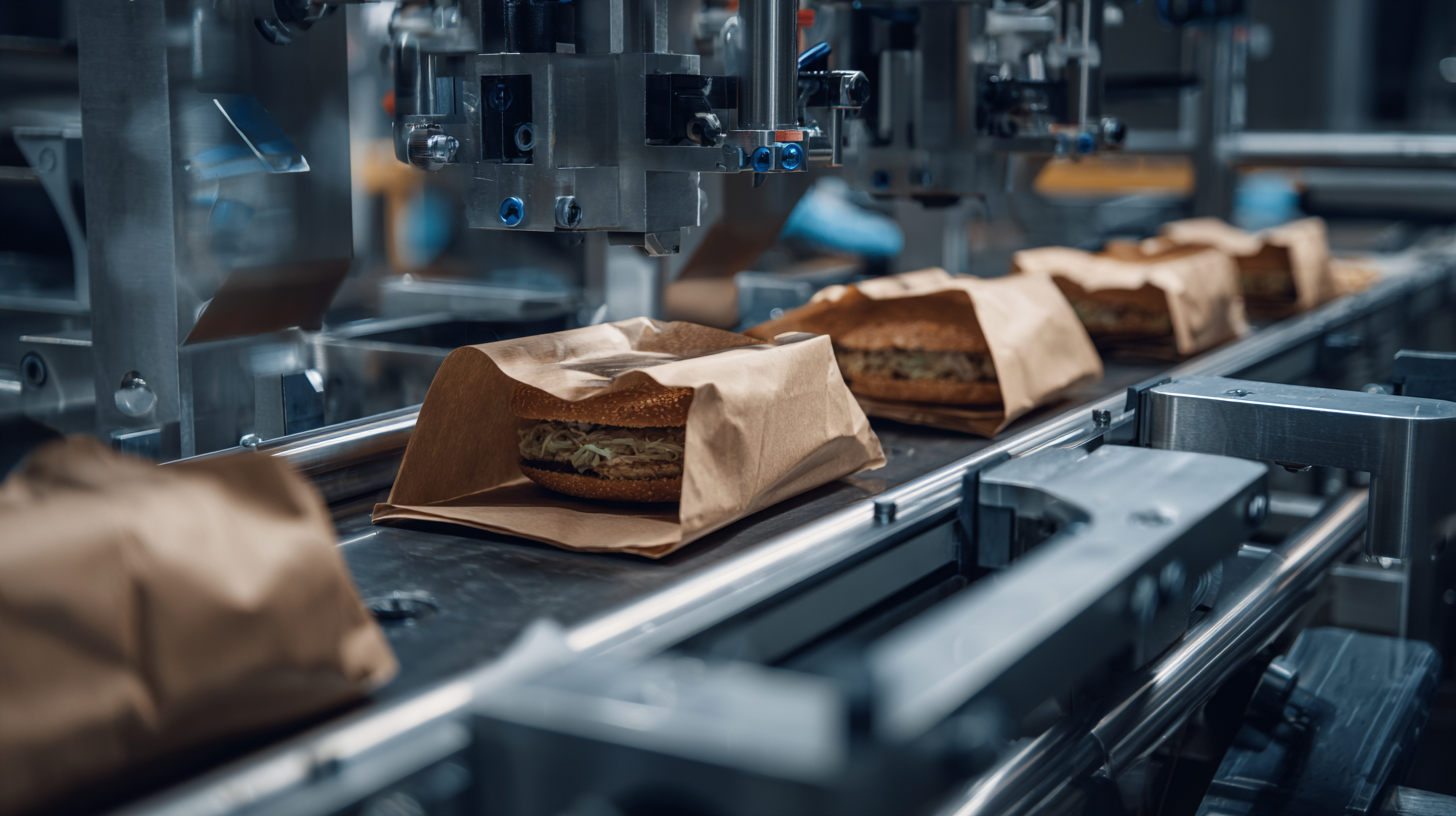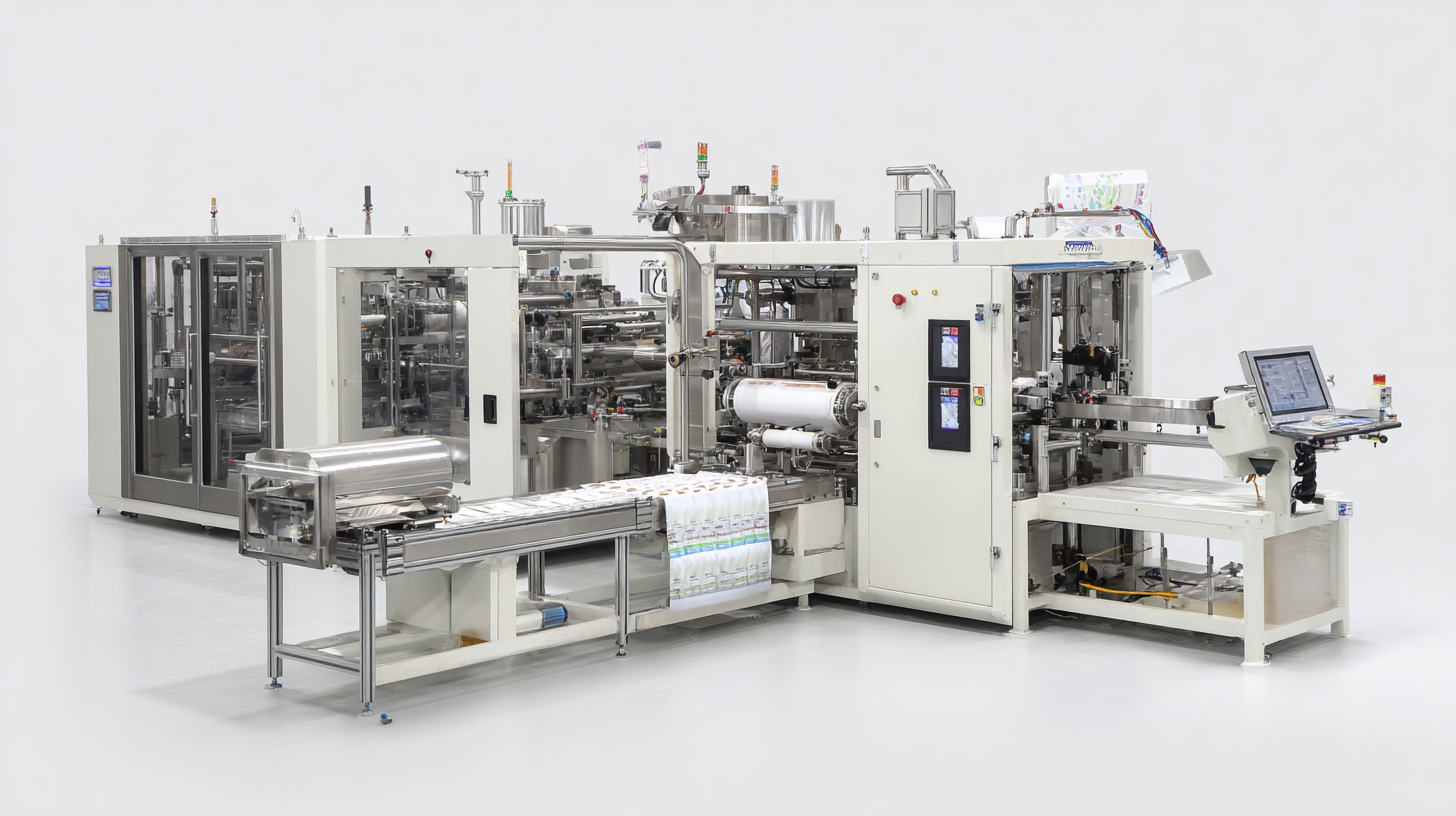Emerging Trends in Food Packaging Technology 2025 Your Ultimate Guide to the Best Food Packing Machines
In recent years, the food packaging industry has undergone significant transformations driven by technological advancements and evolving consumer preferences. As we look toward 2025, industry analyses suggest that the global food packaging market is projected to reach approximately $500 billion, highlighting the increasing demand for innovative solutions in food safety, sustainability, and convenience. Central to this growth are cutting-edge food packing machines that not only enhance productivity but also ensure compliance with stringent health regulations. Emerging trends such as smart packaging, biodegradable materials, and automation are reshaping the landscape, enabling manufacturers to meet the dual goals of efficiency and environmental responsibility. As we delve into the intricate developments of food packing technology, this guide will serve as your ultimate resource for understanding the best food packing machines available and their impact on the future of food packaging.

Innovative Materials Revolutionizing Food Packaging in 2025
In 2025, the food packaging industry is set to undergo a transformative shift, driven by innovative materials that prioritize sustainability and efficiency. Key players in the biodegradable plastic market are experiencing significant growth, spurred by supportive government policies and a rising consumer preference for eco-friendly packaging solutions. The integration of biodegradable polymers promises to reduce waste and support environmental sustainability efforts, with companies focusing on advanced materials that are designed to decompose naturally, aligning with stricter regulations set to be enacted by 2026 on packaging waste management.
Additionally, the emergence of enzymatic technology is redefining food preservation methods. This revolutionary approach utilizes natural enzymes to enhance the freshness and shelf life of perishable goods while minimizing the environmental impact. Furthermore, recent innovations in smart packaging, particularly those developed by research institutions, are addressing challenges in maintaining seafood freshness and safety. With the global food packaging market projected to see substantial growth in the coming years, these advancements underscore a paradigm shift towards sustainable practices, paving the way for a future where innovation and sustainability go hand in hand.
The Role of Automation in Modern Food Packing Machines
Automation is revolutionizing the food packaging industry, paving the way for enhanced efficiency and accuracy in packing processes. Modern food packing machines are increasingly equipped with advanced automation technologies, enabling them to carry out tasks with minimal human intervention. This shift not only increases productivity but also significantly reduces the risk of errors, ensuring that products are packaged consistently and securely. From automated filling systems to smart labeling, these machines are designed to meet the growing demands of the market while adhering to stringent safety standards.
Moreover, the integration of automation allows for real-time monitoring and data collection, providing valuable insights into the packing process. This capability enables manufacturers to optimize their operations, leading to decreased waste and improved resource management. As businesses strive to adapt to changing consumer preferences and market conditions, the role of automation in food packing machines will continue to expand, making them an essential component of modern food production. Embracing these technologies not only propels operational efficiency but also supports sustainability efforts, as automated systems are often more energy-efficient and can reduce overall packaging waste.

Sustainable Practices: Eco-Friendly Packaging Solutions for 2025
As we move closer to 2025, sustainable practices in food packaging are gaining momentum, driven by consumer demand for eco-friendly solutions. Traditional packaging methods often contribute to environmental degradation, making it crucial for businesses to adopt more sustainable materials and methods. Innovative companies are exploring bioplastics, which are derived from renewable sources such as cornstarch and sugarcane. These materials not only reduce reliance on petroleum-based plastics but also promote biodegradability, ensuring that packaging doesn’t linger in landfills for generations.
In addition to materials, the design and functionality of packaging are evolving to minimize waste and enhance sustainability. Techniques like minimalistic packaging reduce excess material use, while smart packaging technologies help monitor freshness and extend shelf life, thereby reducing food waste. Furthermore, the rise of reusable packaging systems allows consumers to participate in the sustainability movement actively. By embracing these eco-friendly packaging solutions, companies can meet regulatory demands and appeal to environmentally conscious consumers, ultimately fostering a more sustainable future for the food industry.

Smart Packaging: Integrating Technology with Food Safety and Freshness
The food packaging industry is undergoing significant transformation as smart packaging technologies emerge at the forefront of innovation. By 2025, it is projected that smart packaging will account for over 20% of the global food packaging market, driven by increasing consumer demand for enhanced food safety and freshness. According to a report by MarketsandMarkets, the smart packaging market is expected to reach $32.49 billion by 2024, highlighting the growing reliance on integrated technology to improve not just packaging aesthetics but also functionality.
Smart packaging solutions integrate sensors and indicators that monitor various conditions like temperature and humidity, ensuring that food products maintain their quality throughout the supply chain. For instance, active packaging technology can release or absorb gases to extend shelf life, while intelligent packaging equipped with RFID tags provides real-time tracking of food items. This trend is underscored by a shift in consumer preferences towards transparency and traceability in food sourcing. With the adoption of smart packaging technologies, brands can bolster consumer confidence by providing crucial information about product conditions, ultimately leading to safer and fresher food products directly reaching the consumers.
Emerging Trends in Food Packaging Technology 2025
| Packaging Type | Key Features | Technology Integration | Benefits |
|---|---|---|---|
| Smart Labels | Real-time tracking and information | NFC and QR code technology | Enhanced consumer engagement |
| Biodegradable Packaging | Environmentally friendly materials | Plant-based polymers | Reduced carbon footprint |
| Active Packaging | Absorbs gases or moisture | Smart sensors and barriers | Extended shelf life |
| Intelligent Packaging | Temperature and freshness monitoring | Temperature sensors | Improved food safety |
| Edible Packaging | Completely consumable material | Natural ingredients | Reduced waste |
Top Food Packing Machines to Watch for in the Coming Years
As the food industry evolves, so does the technology behind food packaging. In 2025, we can expect to see innovative machines that not only enhance efficiency but also prioritize sustainability. Among the top contenders, vacuum packaging machines will continue to gain traction, extending shelf life and reducing food waste. These machines create a vacuum seal around products, which preserves freshness and taste, making them ideal for various food items.
Tips for choosing the right food packing machine include assessing your production volume and type of food you process. For high-volume production, consider machines that offer automation features to streamline operations. Additionally, ensure the machine complies with food safety regulations, which is crucial for maintaining quality and safety standards.
Another trend to watch is the rise of eco-friendly packaging solutions. Machines designed for biodegradable and recyclable packaging materials will become increasingly sought after by businesses aiming to reduce their environmental footprint. Investing in such technology not only benefits the planet but also aligns with customers' growing preference for sustainable products.
